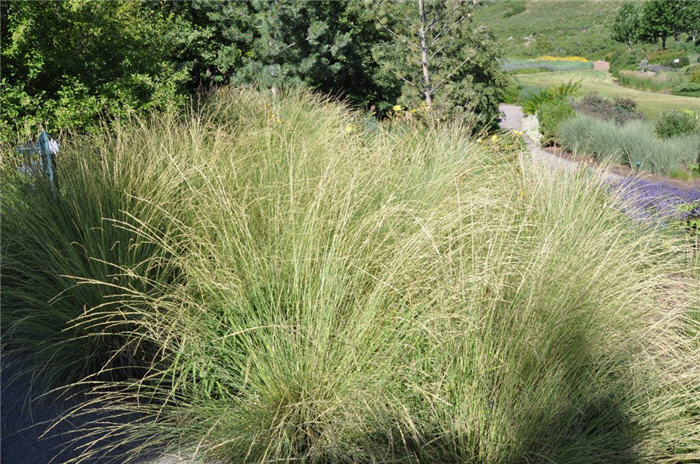| Botanical Name: Panicum virgatum | |
| Common Name: Switch Grass |

-
Anatomy
-
Culture
-
Design
Plant Type
Perennial, Grass
Height Range
3-6', 6-12'
Flower Color
Blue, Orange, Pink, Red
Flower Season
Summer, Fall
Leaf Color
Green, Blue Green
Bark Color
n/a
Fruit Color
n/a
Fruit Season
n/a
Sun
Full
Water
Low
Growth Rate
Moderate
Soil Type
Sandy, Clay, Loam
Soil Condition
Average, Rich, Well-drained
Soil pH
Neutral
Adverse Factors
n/a
Design Styles
Formal, Meadow, Ranch
Accenting Features
Fall Color, Showy Flowers, Specimen
Seasonal Interest
Summer, Fall
Location Uses
Perennial Border, Shrub Border, Foundation, Patio, Raised Planter, Walls / Fences
Special Uses
Cut Flowers, Hedge, Small Spaces
Attracts Wildlife
Birds, Butterflies
Information by: Stephanie Duer
Photographer: Susan Frommer
Photographer: Susan Frommer
-
Description
-
Notes
Switch grass is a north American native and an original component of the Midwestern Plains. It is a warm-season (it goes dormant during the winter) clumping grass with an upright form, interesting flowers, showy fall color, and a great winter presence. It grows from 4 to 7 feet tall and about half as wide, though in time may spread wider. Airy, delicate flowers appear in mid-summer, hanging along an arching, wiry stem, and are pink to red to orange. Foliage turns yellow to orange in the fall, and the flowers turn a silvery white. there are now many cultivars to choice from, and they all make excellent and low-care additions to perennial or shrub borders, or in more naturally styled settings.
Panicums are Plains' natives, and they require full sun and well drained soils. Will grow in clay. Over-fertilizing or over-watering will cause the grass to flop. Cut back in late winter, see Guides. No serious pest or disease problems. Though clumping, it may slowly spread by rhizomes, but is not considered invasive. Deer and rabbit resistant.